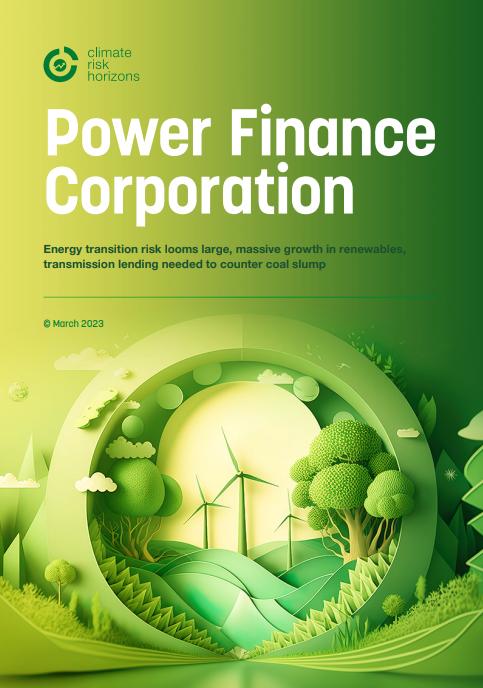
Energy Transition Risk looms large for PFC/REC, must expedite clean energy lending to counter coal slump.
PFC and REC face stagnating growth and profit levels as the two NBFCs are failing to adapt to India’s ongoing energy transition, warns new analysis from think tank Climate Risk Horizons. The analysis says that the two public infrastructure companies under the Ministry of Power have not diversified sufficiently into new energy technologies (wind, solar, battery storage, EV infrastructure) even as their coal power loan book shrinks; without a massive and rapid shift towards financing of renewable energy and other “transition” sectors, the companies’ profitability and share value face a challenging future.
According to the estimates, without course correction in favour of investments in the energy transition, PFC and REC’s net profit will grow at a mere 0.2% and 2.5% CAGR respectively from FY 2022-2025, due to slowdown in loan book growth and lower yields.
Cost advantages for renewable technologies, declining profitability in the thermal power sector and climate change concerns have caused a decline in new coal power projects being built, even as private investment has flocked to India’s renewable energy expansion. PFC and its subsidiary REC have historically been the largest lenders to India’s power sector, but have yet to shift their financing towards renewable energy on the scale needed to deliver continued growth and profits. The proportion of renewable energy in PFC’s gross loan assets has grown from 4% to just 11% and its share in REC’s loan book has been stable at 3-4% from FY2018 to FY2021.
Recent trends in the energy sector suggests that unlike the past decade, future growth for PFC/REC will not come from coal, with a declining share of coal lending in PFC’s and REC’s loan books: from 71% to 47% for PFC and 45% to 40% for REC, since FY2018. Given the broader shift in climate policy, CRH estimates that growth in conventional generation loan books for both the companies will be negative over the coming years.
“PFC continues to rely excessively on financing conventional generation projects, with a minuscule RE loan book. Over the coming years, both PFC and REC will need significant growth in RE and other energy transition areas to counter the ongoing decline in new thermal generation lending, in order to sustain healthy top and bottom line growth”, said Abhishek Raj of Climate Risk Horizons.
“PFC and REC will need approximately 142% and 156% CAGR growth in their renewable energy loan book over the next 3 years in order to deliver a 10% net profit CAGR. To achieve this loan book growth they will need to disburse approximately ₹497,315 Cr over the next three years, an amount sufficient to meet the debt capital requirement of approximately 89 GW of solar and 38 GW of onshore wind capacity. This would go a long way to meeting India’s 450 GW by 2030 target for renewable energy,” he added.
“Our analysis suggests that continued access to low cost international capital via green bonds will be key for PFC/REC’s profitability”, said Ashish Fernandes, CEO of Climate Risk Horizons. “Ironically, continued lending to new coal projects will pose a material risk in this regard, as ESG-aligned investors become wary of fossil fuel investments and could stay away from PFC offerings if the company is also financing new coal power plants.”
Read full analysis at https://climateriskhorizons.com/research/power-finance-corporation.pdf
